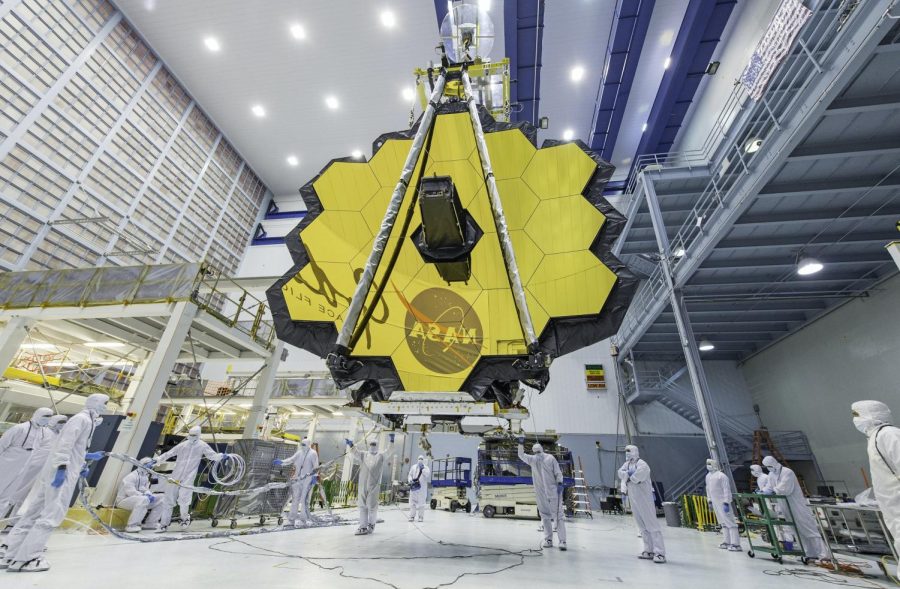It’s a Time Machine, It’s a Satellite, It’s the James Webb Space Telescope!
November 18, 2021
Possibly the most famous telescope in the world might be the Hubble Space Telescope. It has given us some incredible images of our solar system, galaxy, and beyond, and the Hubble has been in service for nearly 30 years. Originally the Hubble’s lifespan was much shorter, but engineers and scientists have been able to rely on it for many more decades. Now, there is a new telescope soon to take over: the James Webb Space Telescope (JWST). After nearly 15 years of many delays, project changes, and uncertainty, the James Webb Telescope is prepared to launch on December 18th, 2021. In less than a month our entire view of the universe could be expanded forever. The most recent development with the JWST occurred when the telescope was moved to the launch site in French Guiana in September, and many details about the relocation were kept secret to prevent theft or potential damage to the telescope. Now it is in its final month of preparation for launch aboard an Ariane Rocket.
The telescope might look a little different from the tube shaped design of the Hubble, but it is all designed perfectly to maximize how much of the night sky can be observed. The mirror on the JWST is almost two and a half times larger in diameter, and the gigantic size means that James Webb can’t properly fit in common rockets without some even more complicated folding panels. Another crucial part of the JWST launch is where it is being sent. Hubble is orbiting just beyond the Earth’s atmosphere while the James Webb Space Telescope will orbit nearly 1.5 million kilometers away just beyond the Moon. With all of these advantages, James Webb will be able to see objects nearly 9 times fainter than Hubble’s maximum viewing range.
Telescopes come closer to the idea of a time machine than any other attempt so far. When the James Webb Telescope or Hubble looks out at the night sky and observes stars that are millions of light years away, they are actually looking back in time. That light has been traveling for millions of years, and the actual image we see now is a glimpse into the past. James Webb will enable humanity to look back even further in time and uncover more questions about the world and the universe. Prepare for even more stunning images and monumental discoveries from this project nearly two decades in the making.
Some more sources to learn more about JWST:
https://www.rmg.co.uk/stories/topics/james-webb-space-telescope-vs-hubble-space-telescope
https://www.nasa.gov/content/james-webb-space-telescope-latest-news
https://webbtelescope.org/


